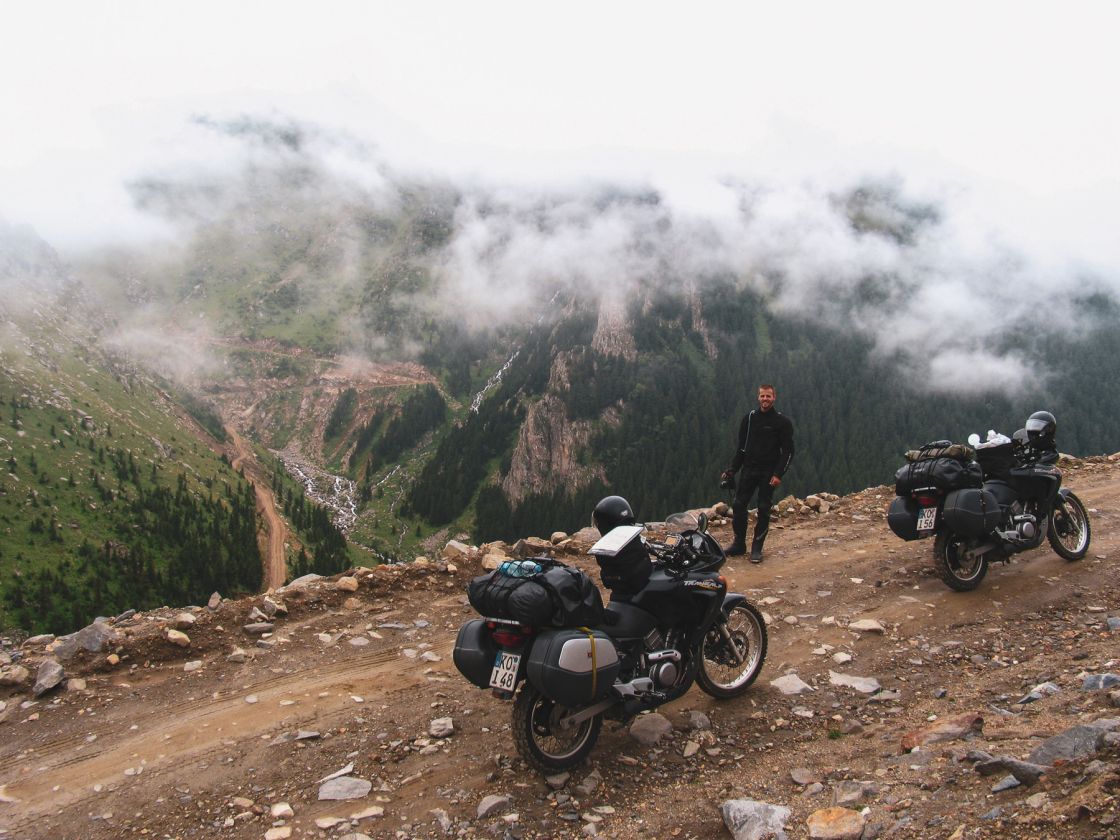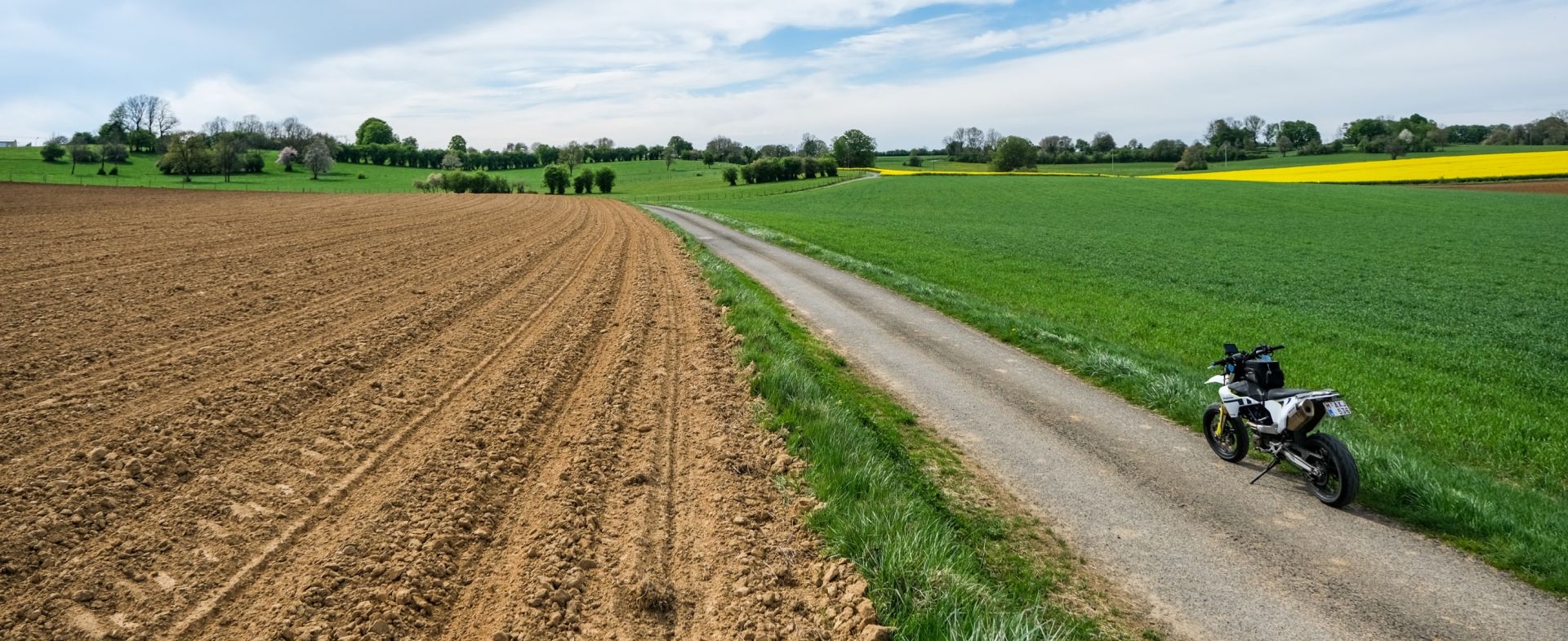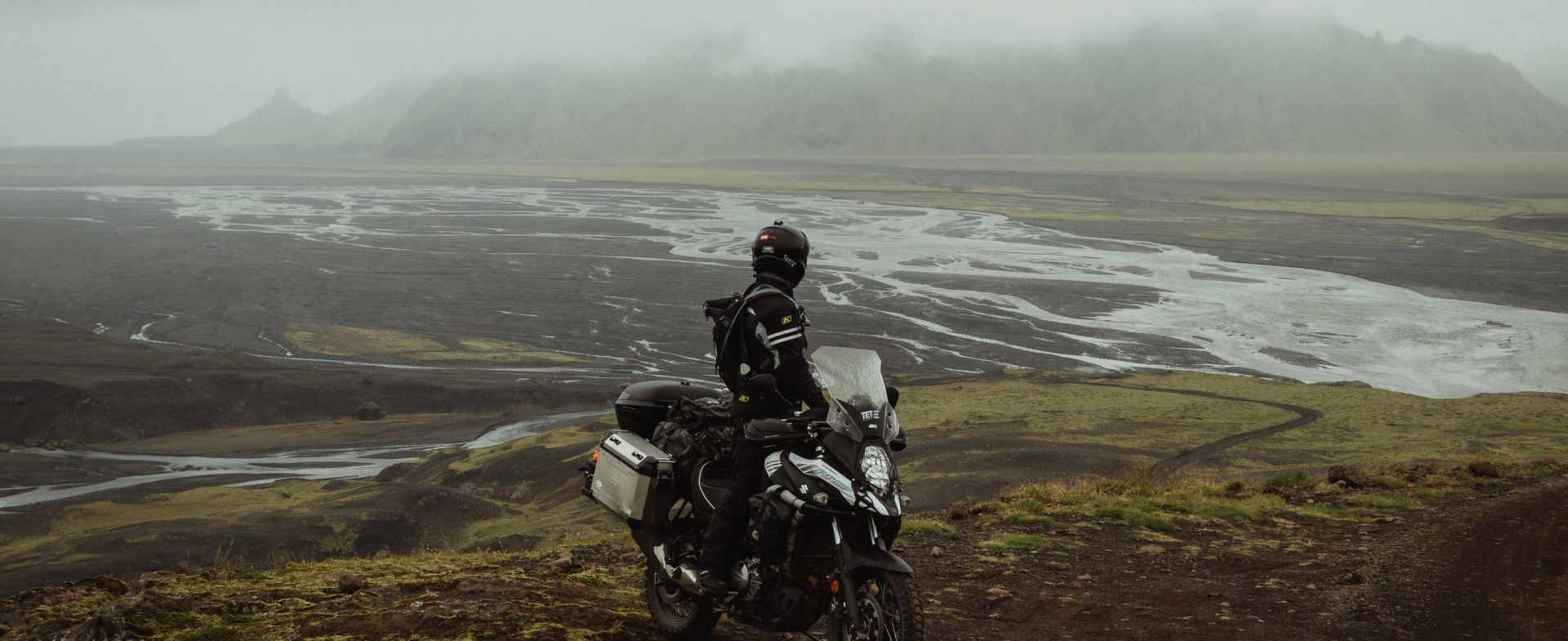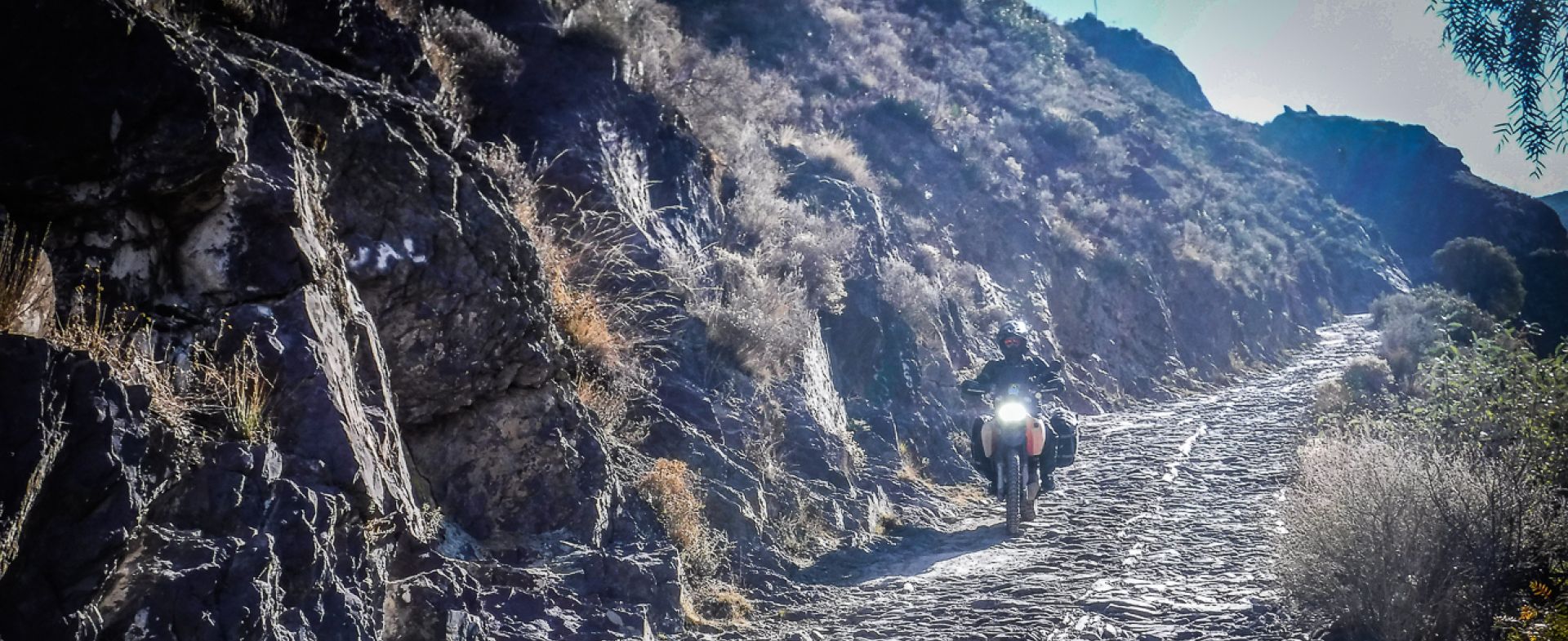From the question of where exactly Mount Ararat is to the idea that one could ride there on a motorcycle, wasn't too much of a big stretch on a blissful beer evening. The actual ride to the far east of Turkey was all the further. After almost five weeks in the saddle we have covered over 10,000 kilometers more and we're richer by a few experiences.
To the far east of Turkey
Motorcycle Diaries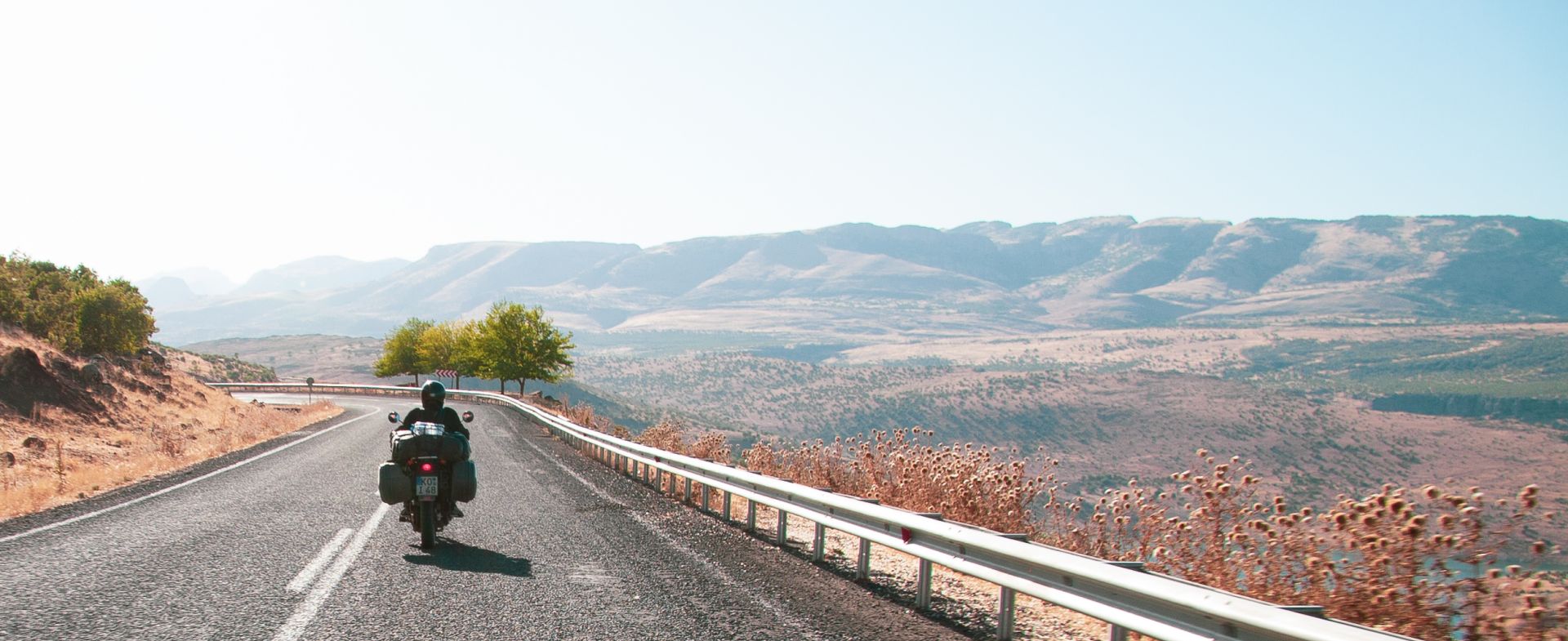
Merhaba. Merhaba.
Loud and sticky Istanbul welcomes us. When we turn into the district of Sultanahmet the vents of the Hondas have already been running for a long time. Everything stands still. The sultry air as well as the traffic on the intersection in front of us. People honk their horns, complain and gesticulate a lot, but we can't move forward. We make our way through the avalanche of cars, past yellow cabs, packed tourist buses and right through the blue haze of exhaust fumes. Welcome to Turkey! After almost four days of travel, we park the motorcycles at the foot of the Blue Mosque. The muezzin's call echoes in the hot evening air.
The slate-gray clouds hang low over the city as we load the motorcycles in the morning. We leave Europe quite unspectacularly, cross the Bosporus via the Fatih Bridge over to Asia. Istanbul seems to have no end. For hours we ride straight ahead on the mostly multi-lane road. Large-scale industry lines our path. Dreary landscape. Garbage is blown across the road in gusts. Then it starts to rain. At the roadside we hurriedly put on our rain suits.
Shortly after, we turn off the main road. The sky clears up, pine scent to sunshine and in front of the front wheel stretches a gravel road. We let ourselves drift: Through tiny villages, across rolling steppes, past gently gawking cows and excitedly clucking chickens.
The shadows are already long as we pitch the tent right next to the dusty path. Quickly a fire is lit and gives comforting warmth. What a contrast to Istanbul, just 250 kilometers away.
Turkish hospitality
In a small grocer's store in Mengen we can refill our Camelbaks. It is Sunday and after a short time we are surrounded by the numerous guests of the teahouse opposite. They invite us for a Tschai while they talk about motorcycles with a lot of palaver - despite the obvious language barriers. Ali even knows a few words of German, with the help of which he becomes the conversation leader and explains our travel plans to all interested. Hearty hugs, many good wishes and a flat bread are given to us on our way to Safranbolu.
In the evening, another impressive lesson in Turkish hospitality awaits us. Already during the tent pitching on a hill not far from a village the curious looks of the children follow us, as two figures on a 125er Yamaha ride over the field way in our direction. After mutual admiration of the two-wheeled, motorized vehicles and the obligatory explanation of our origin, as well as the further travel plans the two drive off again. After a short time their silhouette can be seen again in front of the setting sun. They bring chai, fresh flat bread, fruit and some kind of yogurt.
We start into a cool but sunny morning. Following small country roads, we reach the impressive, rock-fringed lake landscape of Altinkaya Baraji at noon. Fair weather cumuli occasionally cast their shadows on deep green water. The only drawback on this wonderful day is the road surface, which is coarsely graveled and glued with bitumen, causing one or two moments of shock.
The blackest of seas
In Ordu we meet the inland water, which on this day lives up to its name. The already dark horizon merges almost seamlessly into the Black Sea. The four-lane coastal road towards Trabzon is not exactly one of Turkey's driving highlights, so it doesn't matter that a cloudburst soon takes away our view. In no time everything is under water. We reach Trabzon in the dark. The ever-present Kemal Atatürk had a soft spot for this place and moved into a villa on the outskirts in 1924. The center is also named after the man whose likeness can be admired in all sizes, shapes and colors almost throughout Turkey. Sometimes he meets the traveler as a grumpy general, other times as a fashionably dressed dandy. Either way, he is as much a part of the streetscape as the minarets are to the mosque.
The next destination is Sumela. There, a Greek Orthodox monastery has been literally clinging to a rock face for several hundred years. We philistines forego a visit, instead digging our studded tires deep into the muddy, bumpy dirt roads of the Kackar Mountains.
From the green, rain-saturated tea and hazelnut plantations of the Black Sea coast, it's only a stone's throw to the barren, desert-like landscape of the eastern Anatolian plateau. 2000 meters average altitude, enormous temperature fluctuations and accordingly sparse vegetation, make the east of Turkey an inhospitable habitat.
Nuts and pistachios
The bad weather stayed on the northern side of the Kacar Mountains, the deep blue sky becomes more natural day by day and gives hope for an unclouded view of Ararat. Only a few hundred kilometers separate us from the easternmost point of the journey.
The road follows the course of the Bas Cayi River down the valley in wide curves. Herds of goats graze on the mountain slopes, people are hardly to be seen here. Only in the evening, when the tent is already pitched and the stove is hissing, visitors arrive. We look into weather-beaten faces. With a skeptical look into the cooking pot they give us flat bread. Nuts and pistachios serve as barter goods for our part.
The eastern Anatolian plateau disappears in a hazy haze, as if in an approaching sandstorm, to the right and left of the densely traveled road, which is peppered with increasingly large potholes. People overtake here at all costs, even in multiple lanes. Donkey carts next to trucks, pedestrians and all kinds of animals. Everything that can walk or drive is on the main road to the east. Dead dogs on the roadside do not exactly testify to mutual consideration of the road users.
We leave Erzurum to the south and head for Dogubayazit, the last town before the Iranian border crossing to Bazargan. I am overcome by leaden tiredness and continue straight ahead. Only the craters in front of the front wheel or a format-filling truck appearing in the rearview mirror dispel the lethargy under the helmet for moments. A black tea in a convivial round at a gas pump cheers up tired motorcyclists. On we go! It doesn't take long and the odometer is running in slow motion again.
A single dark cloud drifts across the plain, saturated with water. I can see the gray veil from afar. The sunlight refracts a million times in the swirling spray as we leave the shower behind us. A snow-covered silhouette slowly appears on the hazy horizon. And then it stands in front of us. 5137 meters the Ararat stretches into the eastern Anatolian sky. We stop at the edge of the road and are somewhat dazed by the scenery, not yet realizing that we have almost arrived. The camera's shutter clicks as sporadic trucks speed by, making the air taste of dust and diesel.
Just in time for sunset, the engine noise of our two-cylinder dies away above the Ishak Pasa Palace. From far away, the muezzin's call to prayer is wafted to us. Istanbul flashes through my mind. Didn't we ask ourselves there in the heat of the evening traffic why we were taking on the hardships of such a journey? We know why!
The sun is glaring in the cloudless midday sky. Dusty wind swirls through the landscape and across the shimmering ribbon of asphalt. Our plan is to reach the crater of the extinct Nemrut volcano today. From Tatvan the road winds in narrow serpentines up to the crater rim. At the highest point, at 3000 meters, a wonderful panorama opens up. The view sweeps far into the landscape and lingers on the glittering crater lake below. The crater measures seven kilometers in diameter. It was formed by a big explosion that cost the entire summit of Nemrut and gave it the typical shape of a caldera. The last volcanic activity took place at the end of the 19th century.
We turn off the engines. Silence returns. Only the crackling of heated metal can be heard. But we are not alone. As if from nowhere, 3 camouflaged figures appear, each with a Kalashnikov over his shoulder. With poor footwear, no headgear and badges on their open uniform shirts, they stand before us. I pull out the camera and they are already ready for a group photo.
The eastern Anatolian plateau is behind us. Since Bitlis we have been driving steadily downhill and with every meter it gets hotter. The thermometer shows 42°C during the ride. Kilometers of road works make it difficult to move forward. Deep ruts and pebbles the size of a fist cause unrest in the chassis of the Hondas. The dust kicked up by the trucks ahead is thick and makes overtaking at times a blind flight.
River Euphrates!
In Diyabakir we fill the tanks and Camelbaks. In the evening the Euphrates lies ahead of us. It is still very hot when we park the Transalps at the ferry dock. The sunset is atmospheric. In the gentle transition from dark blue to black, the first stars become visible as we glide towards the western bank of the Euphrates.
At the Kaya campsite above Göreme, the tuff landscape that is so characteristic of this area stretches out directly in front of our tent. Like towers, the so-called elf chimneys stand close together. Tufa weathers easily. Wind and rain formed from it a fairy-tale landscape. Each tower wears a "cap" of basalt. This rock weathers only with difficulty and thus protects the elf chimneys from the influence of the elements.
We still have a good week before we have to take the ferry from Igumeniza to Ancona and thus still some distance ahead of us.
Three days later we are at the Dardanelles strait, which connects the Mediterranean Sea and the Sea of Mamara. Western Anatolia showed itself from a very scenic side. Our route took us past Konya, the home of the dervishes, to the western shore of Lake Beyşehir. We passed Afyon, Kütahya, Balikesir and spent one last night in the open air.
With the departure of the ferry we leave the Asian continent. Gallipoli belongs again to good old Europe. As we head for the Greek border the next day, I would like to turn around again.
Text & Pics: Alan & Rigobert Klee
#FORYOURRIDINGPLEASUREONLY
